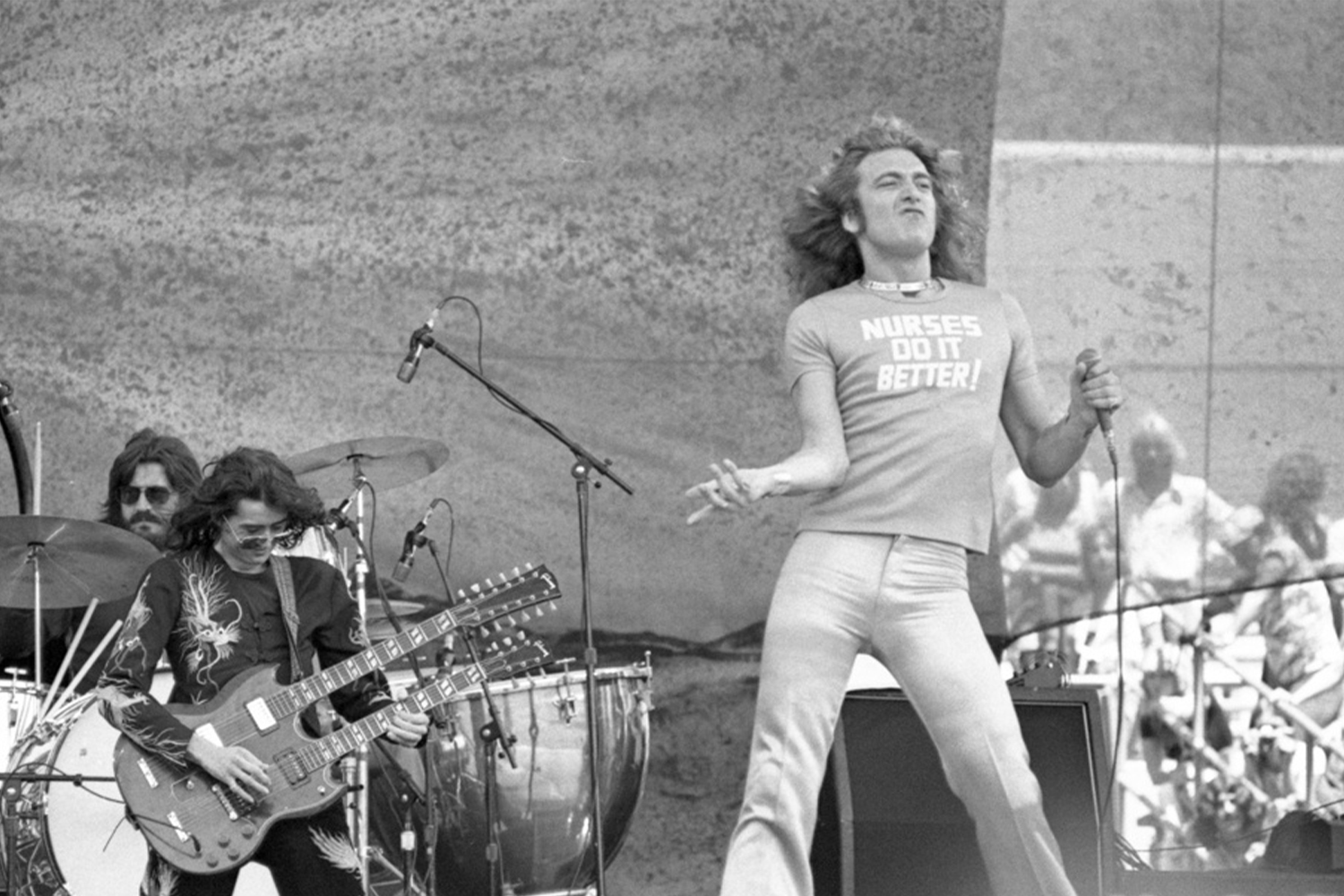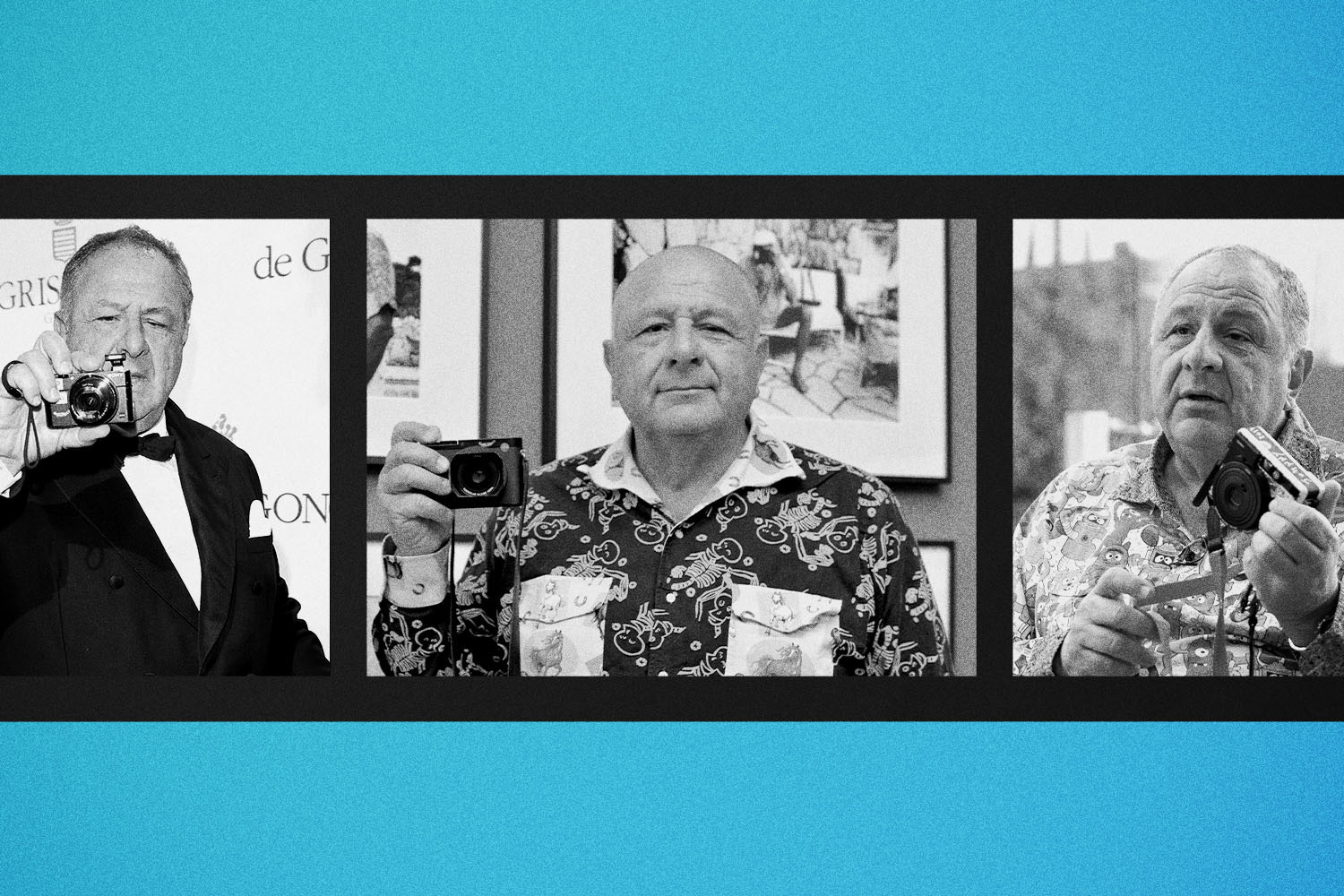There’s Neil Young in all his ragged glory: flannel, ripped jeans, hair to his shoulders and a snarl on his face, jamming with a bearded Elvis Costello. In another photo, there’s Billie Joe Armstrong in 1994, hair flaming red, guitar fully stickered up. Elsewhere, there’s Dave Grohl at the 1996 Tibet Freedom Concert, his hair braided like Laura Ingalls Wilder. There’s John Lee Hooker relaxing with Keith Richards, who’s staring down the lens with a French inhale.
Welcome to @retroblakesberg: a retrospective of legendary rock photographer Jay Blakesberg’s film photos curated by his 25-year-old daughter, Ricki Blakesberg.
If all you know of Jay Blakesberg is his work with the Grateful Dead, the account is eye-opening; it’s full of fascinating images of artists spanning all genres and eras, including everyone from Snoop Dogg, Alanis Morissette and Courtney Love to Willie Nelson, Dolly Parton and Stevie Wonder.
“I love showing my dad’s versatility. A lot of people think of him as this hippie rock photographer, but he’s shot punk bands, [rappers], everyone,” says Ricki in a recent Zoom from her home in Portland, Oregon. Her dad, meanwhile, Zoomed in from his San Francisco home.
Jay Blakesberg is a bit like the kid from Cameron Crowe’s Almost Famous, but with a camera instead of a notebook. At 16, he took his dad’s camera to a Grateful Dead show at the Meadowlands. After that, he was hooked. He spent his teenage years traveling from Dead show to Dead show, armed with a camera and psychedelics, even once getting caught with a large quantity of LSD that resulted in an eight-month prison stay. Over the years, he shot a who’s who of American pop culture.
And yes, @retroblakesberg features its share Grateful Dead shots, as well as some gems you could file under “ Deadheads being Deadheads” — field dances, lot sales, and what looks like a Deadhead Ben Feldman, grinning, painted and naked save for a loin cloth and pouch.
Deadheads-in-the-wild are popular shots, Ricki says: “There’s something about seeing people gathering together — no phones, just honest, pure moments. It’s really cool to see it from my dad’s eye. He was tripping on LSD, but he was still capturing those moments.”
While there is a @jayblakesberg Instagram page (run by Jay) featuring what he’s up to now, Ricki started the retro account — featuring film photos mostly from the ‘80s, ‘90s and early ‘00s — during quarantine, partly inspired by the retro-psychedelic aesthetic of the popular @thefamilyacid account, Kate Steffens’ curation of her dad Roger’s photos “documenting his unorthodox life and experiences.”
“I loved seeing her connect with her dad and go through his archives,” she said. “I eventually want to run my dad’s archive. I thought this would be a great way to learn the stories behind the photos — and I knew my dad had thousands of them.”
“Tens of thousands,” Jay adds. “Essentially, Ricki came to me and said, ‘I want to do an Instagram page just of your film photography.’ She expected me to say no, and I’m like, ‘That sounds cool. Go ahead.’”
“In a year she grew it to 15,000 followers,” he adds proudly. The account now boasts 17.5K followers.
There’s a beautiful close-knit-father-daughter vibe between the two. (She calls him “Jay.”) They’re excited to be working on a photo book, Retro Blakesberg Volume I, due out next year. (Jay, meanwhile, is working on a separate book, Psychedelic Icons, also due next year.)
We spoke about the curation, their favorite photos and the many stories behind the Instagram, which Ricki says reaches a demographic mostly in their 20s. “I want those kids to see his art,” she says. “Right now, a lot of my dad’s stuff is catered to the older end. I’m trying to showcase his work in a different way.”
InsideHook: How do you decide which photos to post?
Ricki Blakesberg: A lot of my curation is based on the photo layout. If I’m doing a dancing shot one day, I’ll probably post only dancing shots that week. I like the aesthetic to be consistent. So it starts with me finding one strong image I connect to, and I’ll go off that.
Jay, do you have input what gets posted?
Jay Blakesberg: Not really. She travels on her own frequency.
Ricki: My favorite is the stuff he shot in high school. So much has never been in his books, never been posted. I love getting deep into that. It feels so raw. So many people now think they can pick up a camera and just take pictures. But when I see these photos that my dad captured when he was so young, that’s when I’m like: My dad is an artist.
Ricki, do you help with the @jayblakesberg account as well?
Ricki: No. I want to.
Jay: I don’t let her. She can’t control my life that much.
Ricki: Trust me, I’ve tried.
I love the shot of Neil Young at Broken Arrow Ranch in ’91. What can you tell me about that?
Jay: I got called from Tower Pulse magazine. It was the in-house magazine for Tower Records. They wanted me to shoot Neil for a cover. One of Neil’s ranch-hands met me and the writer at the airport. We followed him to Neil Young’s ranch. We were brought to the train room, where Neil had all his Lionel trains set up. This big beautiful room. And Neil said to me, “We’re going to shoot here, but against this plain white wall. You can’t shoot the trains.” Of all the artists I’ve ever worked with, Neil dislikes the process of being photographed more than anybody. But I can’t just give the magazine one shot against a plain white background. So we went outside, and I said, “Am I OK to take a couple more shots?” “Oh, yeah yeah.” I knew to keep it quick. I shot a few rolls, then he said, “We’re done.” That was the shot. I think it was October 30 or 31, 1991.
Do you remember all the stories and dates of each photo so easily like that?
Ricki: If he can’t remember the exact date, he has a pretty good guess. He’s really good at remembering the stories.
You’ve also got some great Tom Petty shots. There’s one where he looks like he’s doing one of those classic audience callbacks.
Jay: That’s January 20-something, ’97, at the Fillmore. I was hired by Warner Bros. to get publicity photos, because Tom is another artist who hated being photographed and would never sit for photo sessions.
There’s quite a few Green Day shots on the account. Was that a conscious choice to include so many?
Ricki: Last year we watched this punk documentary, and it really just inspired me to ask Jay for punk shots. He had these amazing Green Day photos. It’s cool that my dad captured Green Day before they got big. It showcases the era really well, too.
There’s one of Dave Matthews that feels very 1996.
Jay: When he’s wearing those shorts.
Ricki: That also reminds me of some Trey [Anastasio] shots I’ve posted. Their outfits are just so ‘90s. I’m super into fashion, and I love how much fashion today is inspired by the ‘90s. A huge demographic of people who follow @retroblakesberg are my age, and to see these aesthetics — there’s this vintage thrifting feel to it.
Another I love is John Mayer when he’s got all this 2001 technology around him. Everything about it is so 2001.
Ricki: I love that shot.
Jay: He was a brand new artist at a radio concert. He was opening for Stevie Nicks. I barged into his dressing room. He didn’t have an entourage; nobody knew who John Mayer was. I walk in, he’s laying on the ground. We chat, I took two or three pictures. He’s watching his little Sony Watchman DVD player. Two years later, I ran into him at a Bridge School Benefit. I said, “Hey John, I’m Jay Blakesberg.” He said, “I know who you are. You’re the guy who took that picture of me where I’m wearing those really ugly jeans. Then I ran into him again, seven years later, at Terrapin Crossroads, he’s going to play with Phil Lesh. I said, “Hey John, I don’t know if you remember me.” He said, “Oh yeah, you’re the guy who took those pictures of me with this really ugly jeans.” Literally over nine years, he remembers me as the guy who took pictures of him in these ugly jeans, and I’m like, “Sorry dude, but you’re the guy who wore them.”
What’s the story behind that shot of John Lee Hooker and Keith Richards?
Jay: That was taken at a small recording studio. They were basically sitting there talking about when they were going to meet the next day at Hooker’s house to drink more whiskey and smoke more cigarettes, ignoring me, and it’s become an iconic shot.
What do you remember from the day you shot David Byrne?
Jay: That was done at my studio in San Francisco for an online magazine, Addicted to Noise. I remember saying, “How do I see my photos that you’re using? How do I get on this thing called the internet?” When David tours, he rides around cities on a folding bicycle. He comes to my studio, he’s got his helmet on. My assistant hands him a package because we were expecting a bike messenger. He said, “No, I’m here for a photo shoot; my name is David.”
Ricki, what appeals to you about the shots of the hippies dancing?
Ricki: They’re so honest. I just love the compositions. My favorite is the woman on the field, staring into the distance.
Jay: Watching the sunrise after a full-on psychedelic night of massive hallucinations and LSD consumption.
Ricki: Today, people are always waiting for their photo to be taken. My dad was just taking these photos in an honest way — not to post online or get likes. There was no ego involved.
Jay: People are dancing now at a concert so they can be on TikTok. Those photos are completely organic moments. Those moments can never happen again. Because we all have phones now. That moment of time is frozen.
This article was featured in the InsideHook newsletter. Sign up now.





















